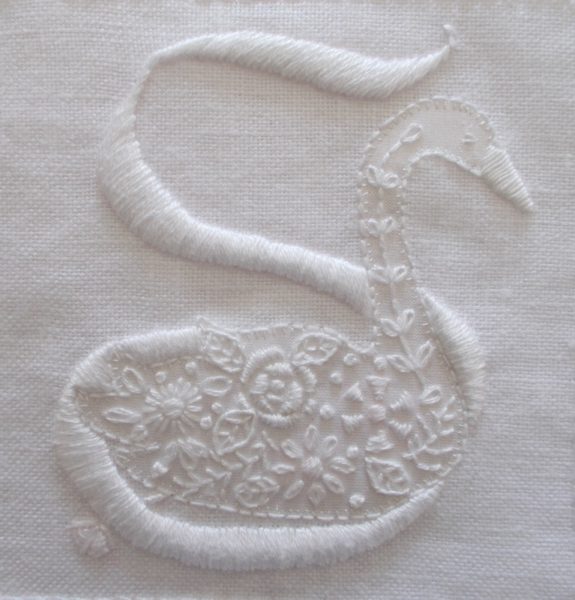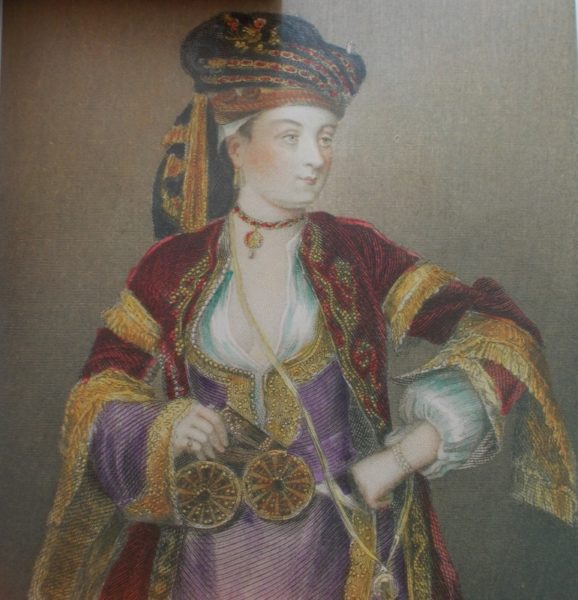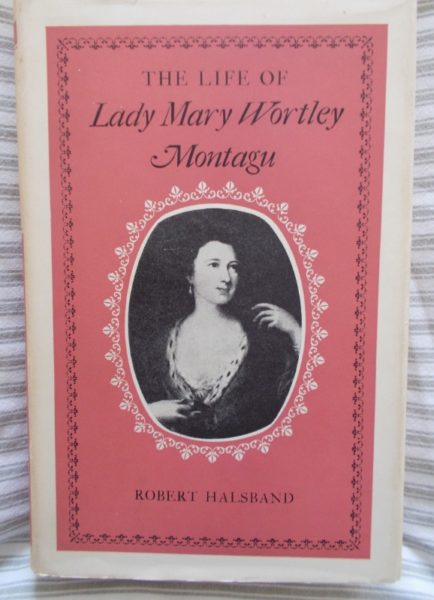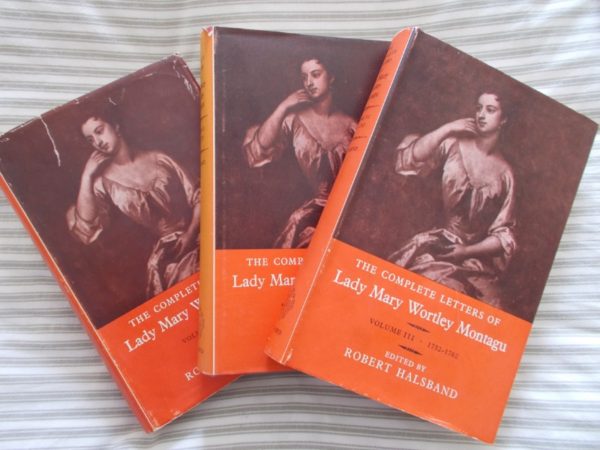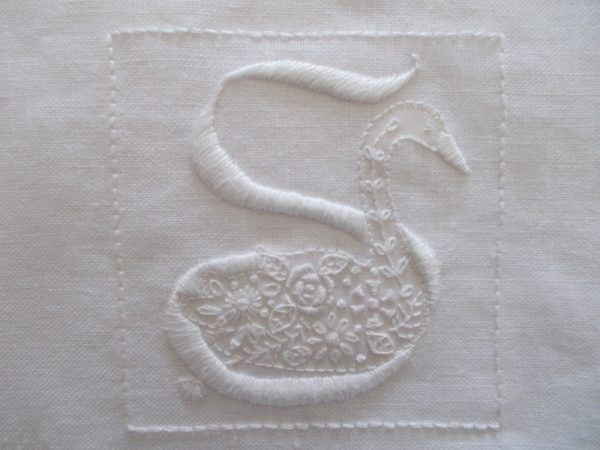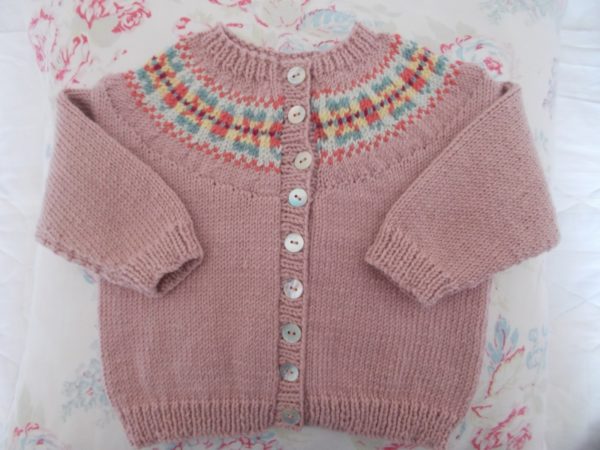
Cardigan with Fair Isle Yoke (Debbie Bliss Baby Cashmerino, pub 2002) in Baby Cashmerino Light
A little cardigan snuck in among all the whitework embroidery because I have to have some plain knitting on needles for the evening – which reminds me that I shall be twitchy this evening unless I manage to give some thought the wool and pattern for the next project. Really it’s ridiculous that with all this time at my disposal I haven’t managed to give more time to admin and planning. This little cardigan only underlines my lack of organisation. I clacked away on three little pattern swatches, chose the one I liked best, knitted away until I got to the yoke and then confusion. I had assumed 2 Debbie Bliss patterns in different books were the same (which does happen but not in this case) but in trying to shoe horn the Fair Isle for one on to the body of the other, I realised my mistake. Wanting to get on I did without a swatch and just worked the colours out on the job – which doesn’t usually work…but this time it did. So for future reference this is Cardigan with Fairisle Yoke from Debbie Bliss Baby Cashmerino (pub 2002) and the colour is Light Pink 600. (I wish I remembered to do this for every garment.)
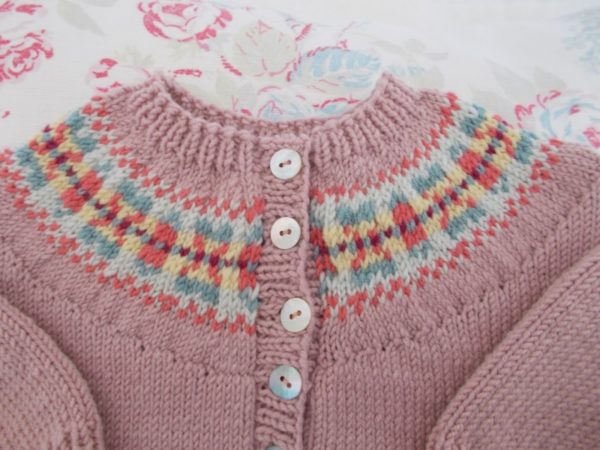
Cardigan with Fair Isle Yoke (Debbie Bliss Baby Cashmerino, pub 2002) in Baby Cashmerino Light
Meanwhile vast acres of time (which go more quickly than I’d like) have enabled me to enjoy trawling through back copies of Selvedge (only Issues 5 and 22 are missing). It’s interesting to go though the magazines with your fingers hovering over a search engine but sad too for so many designers written about or products advertised seem no longer to be active or available – even Selvedge themselves have given up their rather lovely shop in Archway and withdrawn to an industrial estate, although hooray that the magazine still comes out at all. It all underlines what a perilous existence the world of small scale creativity is and how much we miss those little niche pockets of manufacture when they’ve gone. Here’s hoping Loop and Ray Stitch, to name just the ones I use a lot, survive the current crisis. Many businesses have still continued with an online presence and are good at answering emails. The Cloth House (Berwick Street, Soho) were not very optimistic about the white French Linen I need more of. A delivery of the same cloth in several colours had just arrived but there was no white and it’s thought there will be no white until the mills start up again. Tinsmiths in Ledbury are sending me samples of what they think might be suitable (with no charge which is great), so fingers crossed for that. Last night I dreamed about John Lewis heavy casement fabric at £8 a metre – for curtains not embroidery – but I woke up so agitated I had to fire up my laptop to see if I could find anything anywhere else. (I couldn’t.) Then of course it was impossible to get back to sleep!!!
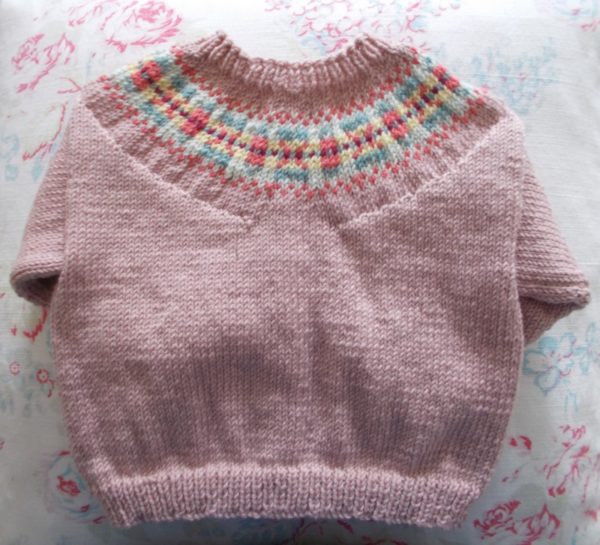
Detail Cardigan with Fair Isle Yoke (Debbie Bliss Baby Cashmerino, pub 2002) in Baby Cashmerino Light Pink 006
But to return to Selvedge and enlightenment. Why are theatre scrubs in hospital blue-green? Because blue-green is the complementary opposite of blood red so that when surgical teams look up and see blues and greens around they don’t get an after image from the red of the open wound. After images have to be taken into account particularly in the decoration of public spaces. A new hospital in the US opened and it soon became clear that people who spent any length of time in the building began to feel unwell. Staff eventually came to the conclusion that the shade of lavender much used in the colour scheme was the problem – they weren’t reacting to the lavender itself but to its complementary colours – the greens of bile and vomit. So, now we know! (Selvedge 29 July/August 2009; article about Ptolemy Mann headed Chromatic Scale by Bradley Quinn.)
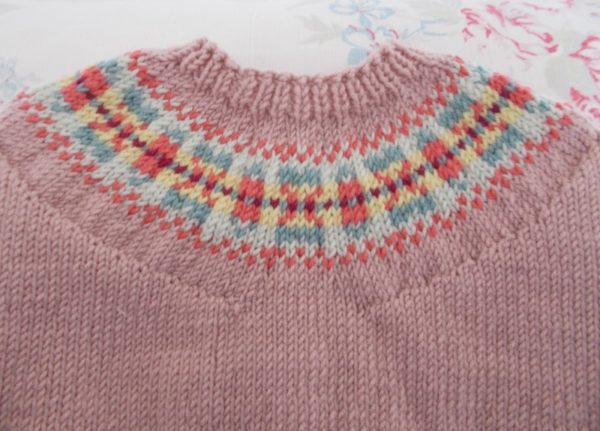
Detail Cardigan with Fair Isle Yoke (Debbie Bliss Baby Cashmerino, pub 2002) in Baby Cashmerino Light Pink 006

